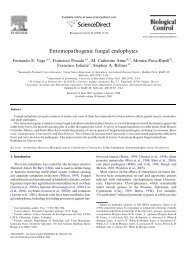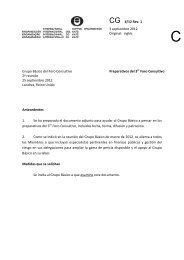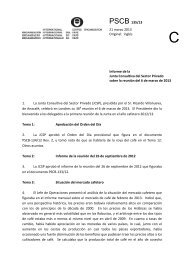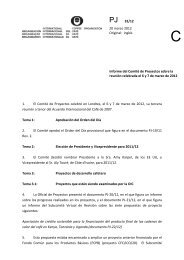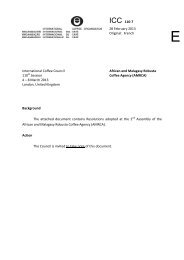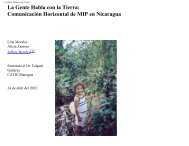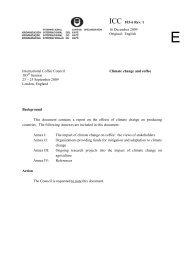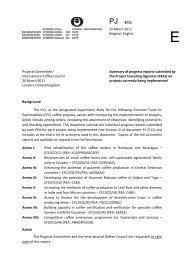Devouring profit - International Coffee Organization
Devouring profit - International Coffee Organization
Devouring profit - International Coffee Organization
Create successful ePaper yourself
Turn your PDF publications into a flip-book with our unique Google optimized e-Paper software.
90<br />
Colombia or Honduras for instance and may be due to the greater land concentration<br />
with a very few farmers having very large estates; we were told that the largest coffee<br />
farm in Latin America is situated in Guatemala.<br />
A smallholder description: for the present project, a survey was carried out to typify<br />
smallholder coffee farmers (García, 1998). This diagnostic was done in 1998 for 62<br />
farms in the departments of Suchitepequez, Retalhuleu and part of Quetzaltenengo,<br />
and included 31 farms from “La Chocola” community. Mean farm size was 1.1 h,<br />
average farmer age was 46 and 84% of them had only incomplete primary school<br />
education. These figures suggest that functional illiteracy may well be high amongst<br />
Guatemalan coffee farmers. If confirmed this is an important disadvantage since it is<br />
well known that increasing educational levels correlate well with improvements in<br />
farm management.<br />
The average size of coffee farmers’ families was five. Again if confirmed nationally,<br />
this could mean that the traditional notion of abundant labour availability does not<br />
apply any more; during the visit several extensionists commented on labour scarcity in<br />
coffee regions. The survey showed that 55% of the farmers relied solely on family<br />
labour while in the remaining 45%, the farmers contract farm labour. Since IPM strategies<br />
involve many activities and interventions in order to manage the pests, this<br />
implies extra labour needed to carry out the control measures proposed. If rural labour<br />
becomes scarce, this would increase difficulties in controlling CBB.<br />
Despite Anacafé’s efforts, just 22% of these smallholders were trained in coffee management<br />
and this is a key barrier to promote IPM strategies. Moreover, only 38% of<br />
them had had access to credit, with another 38% responding that they had not requested<br />
it and the other 24% stating that they could not obtain credit. This situation<br />
could be due to both lack of collateral and possibly also high interest rates. A common<br />
occurrence is to sell coffee cherries through intermediaries. Almost 94% of them use<br />
this channel to sell their coffee despite the Chocola community having infrastructure<br />
to carry out the post-harvesting processing. This decision has implications for the gross<br />
income of the farmers, which will be lower than if they process the coffee themselves.<br />
<strong>Coffee</strong> farmers diversify their income by growing and selling bananas: almost<br />
50% of them had this extra income.<br />
Rural Wages: the legal cost of a day’s labour is 31.50 Quetzals 25 , equivalent to<br />
US$4.0. However some farmers do not pay this salary and many rural workers give up<br />
the bonus, incentives and the payment corresponding to Sunday, in order to get a job<br />
easily. The day’s wage is structured as follows:<br />
a. Wage = 21.62 Quetzals<br />
b. bonus + incentives = 5.38 Quetzals<br />
c. 7 th day = 4.50 Quetzals<br />
Total = 31.50 Quetzals<br />
25 Quetzal is the Guatemalan currency, US$1 = 7.7 Quetzals




